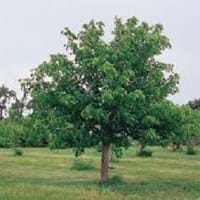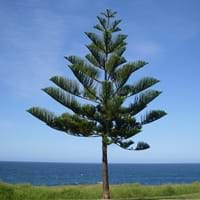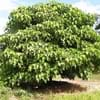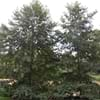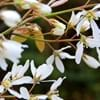Life Span
Perennial
Perennial
Origin
United States, Mid-Atlantic United States, Southeastern United States, Central United States
Australia
Types
Not Available
not available
Habitat
Forest edges, Forest margins, Tropical regions
Subtropical forests
USDA Hardiness Zone
3-7
9-11
Sunset Zone
Not Available
H1, H2, 17, 21, 22, 23, 24
Habit
Oval or Rounded
Pyramidal
Flower Color
Light Yellow, Yellow green, Ivory
Green
Flower Color Modifier
Bicolor
Bicolor
Fruit Color
Tan, Sienna
Green
Leaf Color in Spring
Green, Dark Green
Dark Green
Leaf Color in Summer
Dark Green
Dark Green
Leaf Color in Fall
Orange, Tan
Dark Green
Leaf Color in Winter
Not Available
Dark Green
Leaf Shape
Compound
Needle like
Plant Season
Spring, Summer, Fall
Spring, Summer, Fall, Winter
Sunlight
Full Sun, Partial Sun
Full Sun, Partial Sun, Partial shade
Type of Soil
Clay, Loam
Loam, Sand
The pH of Soil
Acidic, Neutral
Acidic, Neutral, Alkaline
Soil Drainage
Average
Well drained
Bloom Time
Late Spring
Spring
Tolerances
Not Available
Drought, Salt, Soil Compaction
Where to Plant?
Ground
Ground
How to Plant?
Seedlings
Tip cutting
Plant Maintenance
Medium
Medium
Watering Requirements
Average Water Needs, Keep the ground moist but not water-logged
Allow to dry out slightly between watering
In Summer
Lots of watering
Lots of watering
In Spring
Moderate
Moderate
In Winter
Average Water
Average Water
Soil pH
Acidic, Neutral
Acidic, Neutral, Alkaline
Soil Type
Clay, Loam
Loam, Sand
Soil Drainage Capacity
Average
Well drained
Sun Exposure
Full Sun, Partial Sun
Full Sun, Partial Sun, Partial shade
Pruning
Remove damaged leaves, Remove dead branches, Remove dead leaves
Prune if you want to improve plant shape, Remove damaged leaves
Fertilizers
All-Purpose Liquid Fertilizer
All-Purpose Liquid Fertilizer, fertilize every 2-3 weeks while growing
Pests and Diseases
Red blotch
Anthracnose, Branch Droop, Root rot, Yellow Leaves
Plant Tolerance
Drought
Drought
Flowers
Showy
Insignificant
Flower Petal Number
Not Available
Not Available
Foliage Texture
Coarse
Fine
Foliage Sheen
Matte
Glossy
Attracts
Birds
Not Available
Allergy
Not Available
Not Available
Aesthetic Uses
Not Used For Aesthetic Purpose
Showy Purposes, Used as Christmas tree
Beauty Benefits
Not Available
No Beauty Benefits
Environmental Uses
Air purification
Shelter for wildlife, Windbreak
Medicinal Uses
Asthma, Cough, Intestinal irritations, Rheumatism
Not Available
Part of Plant Used
Fruits
Whole plant, Wood
Other Uses
Culinary use
Used in Furniture
Used As Indoor Plant
No
Yes
Used As Outdoor Plant
Yes
Yes
Garden Design
Screening / Wind Break, Shade Trees
Container, Feature Plant, Houseplant, Screening / Wind Break, Shade Trees, Street Trees, Tropical
Botanical Name
AESCULUS glabra
ARAUCARIA heterophylla
Common Name
Ohio Buckeye
Norfolk Island Pine
In Hindi
ओहियो बकेये
नोरफोक द्वीप पाइन
In German
Ohio buckeye
Norfolk-Insel Pine
In French
marronnier de l'Ohio
Norfolk Île Pine
In Spanish
Ohio castaño de indias
Norfolk Pine Island
In Greek
Οχάιο Buckeye
Νησί Νόρφολκ Pine
In Portuguese
Ohio Buckeye
Ilha Norfolk Pine
In Polish
Ohio kasztan
Norfolk Pine
In Latin
Ohio buckeye
Insula Norfolk Pinus
Phylum
Magnoliophyta
Coniferophyta
Class
Magnoliopsida
Pinopsida
Family
Hippocastanaceae
Araucariaceae
Clade
Angiosperms, Eudicots, Rosids
Not Available
Tribe
Not Available
Not Available
Subfamily
Hippocastanoideae
Not Available
Properties of Ohio Buckeye and Norfolk Island Pine
Wondering what are the properties of Ohio Buckeye and Norfolk Island Pine? We provide you with everything About Ohio Buckeye and Norfolk Island Pine. Ohio Buckeye has thorns and Norfolk Island Pine doesn't have thorns. Also Ohio Buckeye does not have fragrant flowers. Ohio Buckeye has allergic reactions like Not Available and Norfolk Island Pine has allergic reactions like Not Available. Compare all the properties and characteristics of these two plants. Find out which of these plant can be used as indoor plant. If you are interested to decorate your house and garden, find out aesthetic uses, compare them and select the plant which will beautify your surrounding. Along with beautification, try comparing medicinal and edible uses of Ohio Buckeye and Norfolk Island Pine and you can choose the plant having best and most benefits.
Season and Care of Ohio Buckeye and Norfolk Island Pine
Season and care of Ohio Buckeye and Norfolk Island Pine is important to know. While considering everything about Ohio Buckeye and Norfolk Island Pine Care, growing season is an essential factor. Ohio Buckeye season is Spring, Summer and Fall and Norfolk Island Pine season is Spring, Summer and Fall. The type of soil for Ohio Buckeye is Clay, Loam and for Norfolk Island Pine is Loam, Sand while the PH of soil for Ohio Buckeye is Acidic, Neutral and for Norfolk Island Pine is Acidic, Neutral, Alkaline.
Ohio Buckeye and Norfolk Island Pine Physical Information
Ohio Buckeye and Norfolk Island Pine physical information is very important for comparison. Ohio Buckeye height is 910.00 cm and width 760.00 cm whereas Norfolk Island Pine height is 2,440.00 cm and width 460.00 cm. The color specification of Ohio Buckeye and Norfolk Island Pine are as follows:
Ohio Buckeye flower color: Light Yellow, Yellow green and Ivory
Ohio Buckeye leaf color: Green and Dark Green
Norfolk Island Pine flower color: Green
- Norfolk Island Pine leaf color: Dark Green
Care of Ohio Buckeye and Norfolk Island Pine
Care of Ohio Buckeye and Norfolk Island Pine include pruning, fertilizers, watering etc. Ohio Buckeye pruning is done Remove damaged leaves, Remove dead branches and Remove dead leaves and Norfolk Island Pine pruning is done Prune if you want to improve plant shape and Remove damaged leaves. In summer Ohio Buckeye needs Lots of watering and in winter, it needs Average Water. Whereas, in summer Norfolk Island Pine needs Lots of watering and in winter, it needs Average Water.
